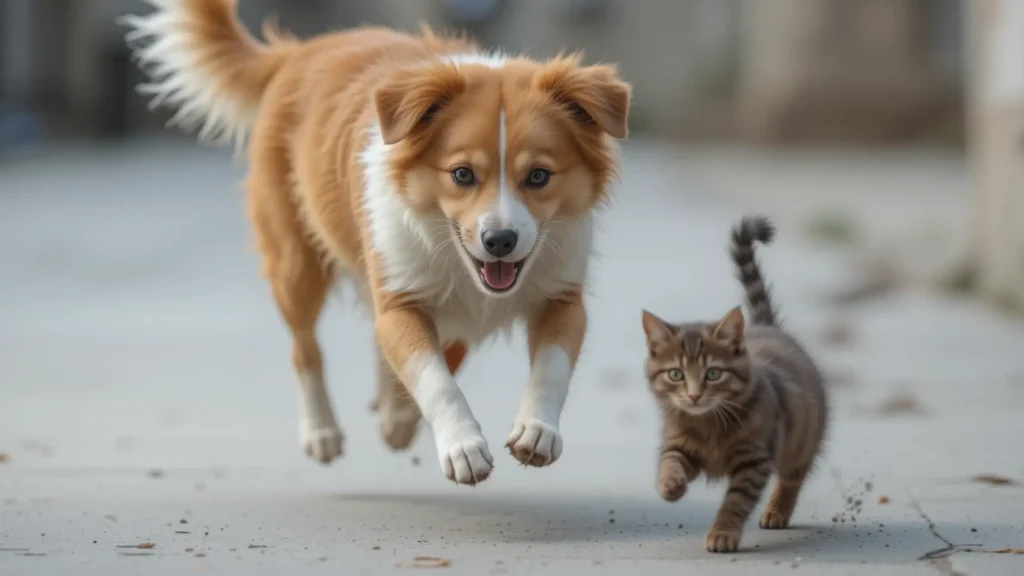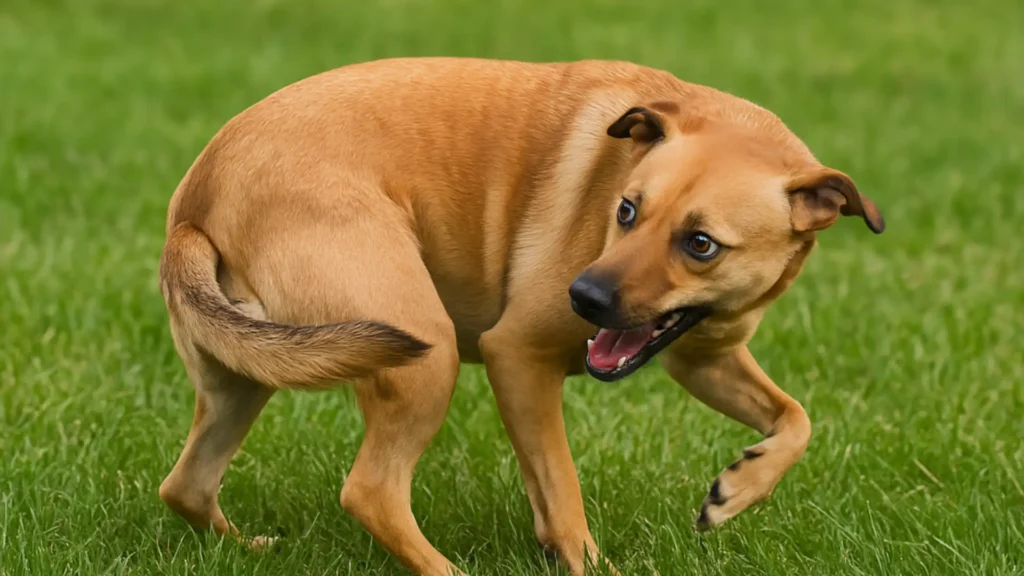A dog’s tail is an essential part of its communication. It conveys emotions and feelings. Tucked tails are a sign to understand that the dog is in stress. When a dog pulls its tail tightly between its legs, it signals stress, fear, or anxiety.
While this may be a normal response in certain situations, persistent tail-tucking can indicate underlying emotional or physical issues that need attention. In this article, we will explore the signs and causes of a tucked tail in dogs, as well as provide effective strategies to help address the issue and improve your dog’s overall well-being.
Signs of a Tucked Tail in Dogs
Tail Between the Legs: The most noticeable sign of a dog feeling stressed or anxious is when they tuck their tail tightly between their hind legs. The tail may be positioned so that it is almost touching their belly.
Family Pet Health Center explains that, “If the dog’s tail is tucked between its legs, it often means “I’m frightened!” or “Please don’t hurt me!” This is especially common whenever the dog feels that it is in the presence of a more dominant dog or person.”
Fractures: Dogs sometimes tuck their tails due to fractures or wound in the tails. They do this, because they can’t lift the tails properly. When this happens, pay attention to if your dog –
- Losses hair in tails
- Bleeds in the tails
- Licks tails
- Bad odors come out from the tails
- Skin infections in tails
Body Language: In addition to the tucked tail, a stressed dog may exhibit other signs such as:
- Cowering or crouching
- Ears pulled back against the head
- Avoiding eye contact
- Trembling or shaking
- Licking lips excessively
- Whining, growling, or whimpering
Avoidance Behavior: A dog may try to hide, back away from situations or people, or seek out a safe space, like under furniture, when feeling overwhelmed.
Causes of a Tucked Tail in Dogs

A dog’s tail position can be influenced by a number of factors. Here are some common causes that might trigger a tucked tail:
Fear: Dogs often tuck their tails when they are frightened by something. This could be –
- A loud noise (like fireworks)
- New environments
- Unfamiliar people or animals
- Sudden movements.
Anxiety: Sometimes, dogs tuck their tails due to anxiety. This may happen for several reasons. The most common reasons are –
- Separation anxiety
- Fear of being left alone
- Stress from being confined in a crate
- New surroundings.
Pain or Illness: Physical discomfort, such as from injury or illness, may cause a dog to exhibit a tucked tail. In this case, there might also be signs of limping or avoiding movement. Spinal pain plays a reason to tuck the tails.
Dominance or Submission: Some dogs may display a tucked tail when interacting with more dominant dogs or humans. This is a submissive posture meant to signal that the dog is not a threat. Dogs show their guild to the leader of the group by tucking their tails.
Trauma or Negative Experiences: If a dog has had traumatic experiences in the past, such as abuse or harsh treatment, they may tuck their tail as a learned response to avoid further harm.
Changes in Routine: Some new environment causes stress and result in a tucked tail. The dogs take time to adapt with these changes. These reasons are –
- A shift in the dog’s daily schedule
- A move to a new home
- Changes in the household such as the arrival of a new pet or person.
Effective Strategies to Address a Tucked Tail and Stress in Dogs
If you notice your dog exhibiting a tucked tail along with other stress signs, there are several strategies you can use to help them feel more secure and comfortable:
Create a Safe Space
Ensure your dog has a quiet, secure space where they can retreat to when they are feeling anxious. This could be a crate, a cozy bed, or a separate room that provides them with peace and solitude.
Keep the environment calm, free of loud noises, and avoid overwhelming stimuli. You can use calming music or pheromone diffusers designed to reduce anxiety.
Gradual Desensitization
Use gradual sensitization to introduce your dog with something new. This involves exposing your dog to the trigger in controlled, manageable doses, paired with positive reinforcement to encourage calm behavior.
VCA Animal Hospitals explains that “Desensitization is a behavior modification technique in which you purposely and gradually expose your pet to a stimulus that has triggered a fear response. The stimulus is always controlled, starting at a very low level, so that your pet does not experience fear or display signs of stress.”
Reward calm behavior when the dog remains relaxed. This helps your dog associate positive experiences with potentially stressful situations.
Training and Confidence Building
Basic training can increase a dog’s confidence and help them feel more in control of their environment. It strengthens the bond between you and your dog, making them feel more secure.
Consult a Veterinarian
If you suspect that your dog’s tucked tail might be due to pain or illness, a visit to the veterinarian is essential. Conditions like hip dysplasia, infections, or neurological issues can cause discomfort and anxiety.
In cases of chronic anxiety or fear-based behavior, a professional dog behaviorist or trainer may be helpful in creating a tailored plan to reduce stress.
Provide Mental and Physical Exercise
Regular physical activity helps relieve stress and can alleviate anxiety in dogs. Make sure your dog gets plenty of exercise, whether it’s through walks, playtime, or other forms of physical activity.
Brittany Grenus, DVM suggest that, “Sniffing has been shown to not only decrease a dog’s heart rate (decreasing their stress), but it also releases dopamine, the “happy” brain chemical. These walks are less about the distance or time and more about quality, allowing them to take their time and explore the area they’re in.”
Puzzle toys and games that engage your dog’s brain can help keep them occupied and distracted from stressors.
Consider Calming Products
Some dogs benefit from pheromone products like sprays or collars that mimic calming scents.
Products like the ThunderShirt apply gentle pressure to your dog’s torso, which can have a calming effect and help reduce anxiety.
Understanding the reasons behind a tucked tail in dogs can help you take the right steps to support your pet’s emotional well-being. By addressing the causes of stress, you can use the positive reinforcement, and offer a secure and calming environment for them.
This way you can help your dog feel more confident and reduce tail-tucking behavior over time. Always prioritize your dog’s comfort and safety, and when in doubt, consult a professional for guidance.
Reference:
- A Dogs Tail Will Tell You A Lot. Family Pet Health Center.
- Overcoming Fears with Desensitization and Counterconditioning. VCA Animal Hospitals.
- 9 Cost-Effective Ways To Keep Your Dog Mentally Stimulated. PetMD.




